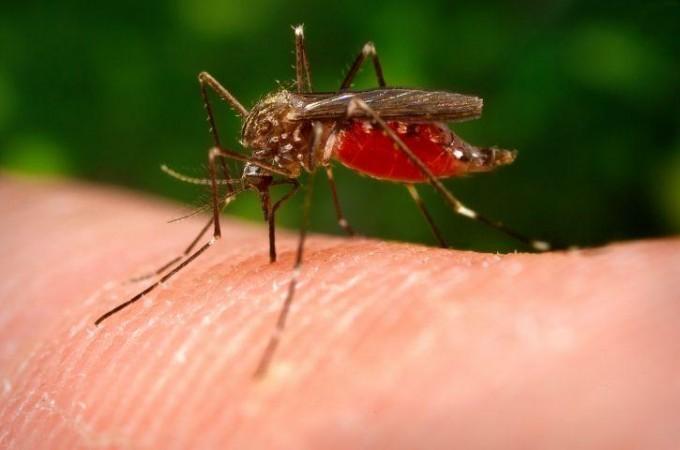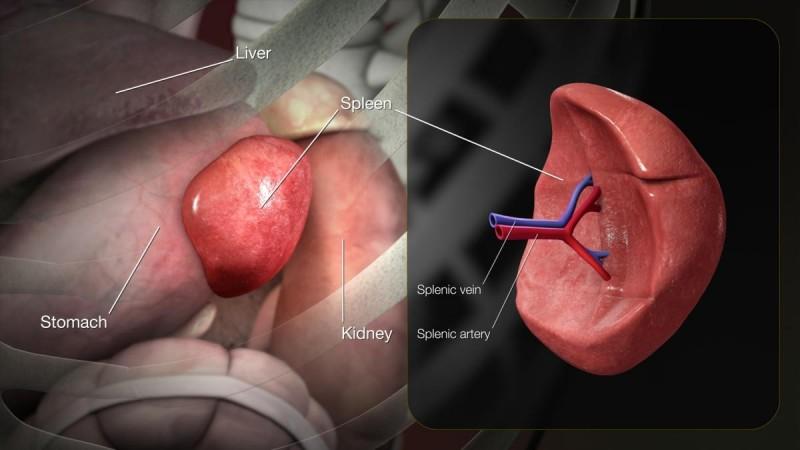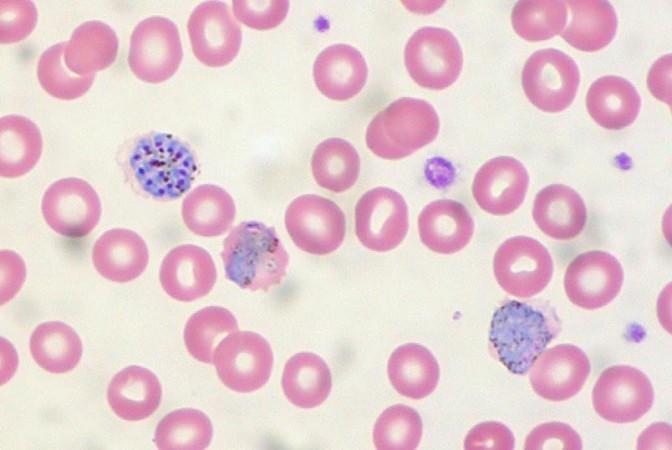The bite of a mosquito causes more harm than just temporary physical pain. The winged insects serve as vectors of parasites that cause lethal diseases in human beings. One such deadly disease is Malaria. Now, a new study states that in chronic infections of Plasmodium vivax—one of the parasites causing the disease—the organism can survive and replicate through a previously undetected lifecycle within the human spleen.
According to the study by an international team of researchers, massive biomass of malaria parasites accumulates within the spleen of the asymptomatic human beings who are infected with Plasmodium vivax. The research provides a deeper understanding of the parasite's specific adaptations that have evolved to increase survival and replication within the spleen.
"Our findings redefine the malaria life-cycle. Chronic malaria should be considered predominantly an infection of the spleen, with just a small proportion circulating in the blood. Accumulation of parasites in the spleen was found with both major Plasmodium species causing malaria, but was particularly apparent in Plasmodium vivax, where over 98 percent of all the parasites in the body were hiding in the spleen," said Dr. Steven Kho, lead author of the study, in a statement.
Mosquito-borne Danger

Malaria is caused in human beings by five parasitic protozoa from the Plasmodium family. They are transmitted through the bites of infected female Anopheles mosquitoes that are the primary vectors. Two of these protozoans—Plasmodium falciparum and Plasmodium vivax—pose the biggest threats. Malaria causes several complications including damage to organs such as the kidneys and the liver, and can also result in the rupturing of the spleen.
According to the WHO, P. falciparum was responsible for 50 percent of infections in South-East Asia, 65 percent in the Western Pacific regions, 71 percent in the Eastern Mediterranean, and 99.7 percent of cases in Africa. P. vivax led to 70 percent of the malarial infections in the Americas. Children accounted for nearly 67 percent of all Malaria deaths worldwide in 2018. P. falciparum and P. vivax are associated with over 400,000 deaths every year.
The life cycle of malaria parasites is complex. It characterized by several rounds of asexual replication in various stages and tissues—both in the intermediate vertebrate host and in the insect host. Within humans beings, the Plasmodium life cycle involves two types of cells: hepatocytes (liver tissues) and erythrocytes (red blood cells, or RBCs). Initial growth in hepatocytes is clinically silent. However, subsequent development in RBCs causes symptoms in individuals without immunity, and the spread of the parasite is believed to be restricted almost exclusively to the intravascular components (i.e) blood vessels.
Within the Spleen

Malaria parasites are said to be eliminated or cleared by the spleen following antimalarial treatment, and it has been assumed that the organ is primarily involved in parasite destruction. "We hypothesised that immature reticulocytes(immature red blood cells), in which P. vivax develops, may display high densities in the spleen, thereby providing a niche for parasite survival," the researchers wrote in the paper.
For the study, the spleen tissue of 22 mostly untreated individuals who had been naturally exposed to P. falciparum and P. vivax were examined by the authors. The patients had asymptomatic splenic Plasmodium infection. Of the 22 patients, 7 were infected by P. vivax, 13 with P. falciparum, and 1 mixed infection. These individuals had been undergoing splenectomy in the Papua province of Indonesia between 2015 to 2017. The researchers investigated the density or concentration of the parasites, infection, and CD71+ reticulocytes.
Also analyzed was the distribution of the three entities throughout the spleen. Nine non-endemic control spleens from individuals in France were also analyzed. These people were undergoing spleno-pancreatectomy between 2017 to 2020, and the density of their reticulocytes was also investigated. No exclusion criteria or consideration for sample size in both cohorts was employed.
Surviving In Secret

It was found that the spleen served as a reservoir for reticulocytes and that these immature blood cells were prime targets for invasion by P. vivax. Also, the spleens that were analyzed harbored significant hidden biomass (accumulation and) of malaria parasites. Their densities were hundreds to thousands of times higher in the spleen than what was in circulation in peripheral blood.
"All stages of P. vivax accumulated in the spleen at magnitudes unexplainable by replication occurring in the circulation alone, with the proportion of each stage in the spleen consistent with the duration in their lifecycle," the authors wrote.
According to the authors, the findings of the study suggest that an undetectable endosplenic lifecycle of P. vivax exists in asymptomatic infection caused by the lethal parasite. "While the spleen does filter out and destroy some parasites, we now show it also provides a shelter for long-term persistence of parasites" explained Dr. Pierre Buffet, co-senior author of the study.
While the study offers new insights into malaria pathology, the scientists admit that it is not bereft of limitations. The main limitations include the asymptomatic condition of all the participants and the small sample size of the study.









!['Had denied Housefull franchise as they wanted me to wear a bikini': Tia Bajpai on turning down bold scripts [Exclusive]](https://data1.ibtimes.co.in/en/full/806605/had-denied-housefull-franchise-they-wanted-me-wear-bikini-tia-bajpai-turning-down-bold.png?w=220&h=138)



